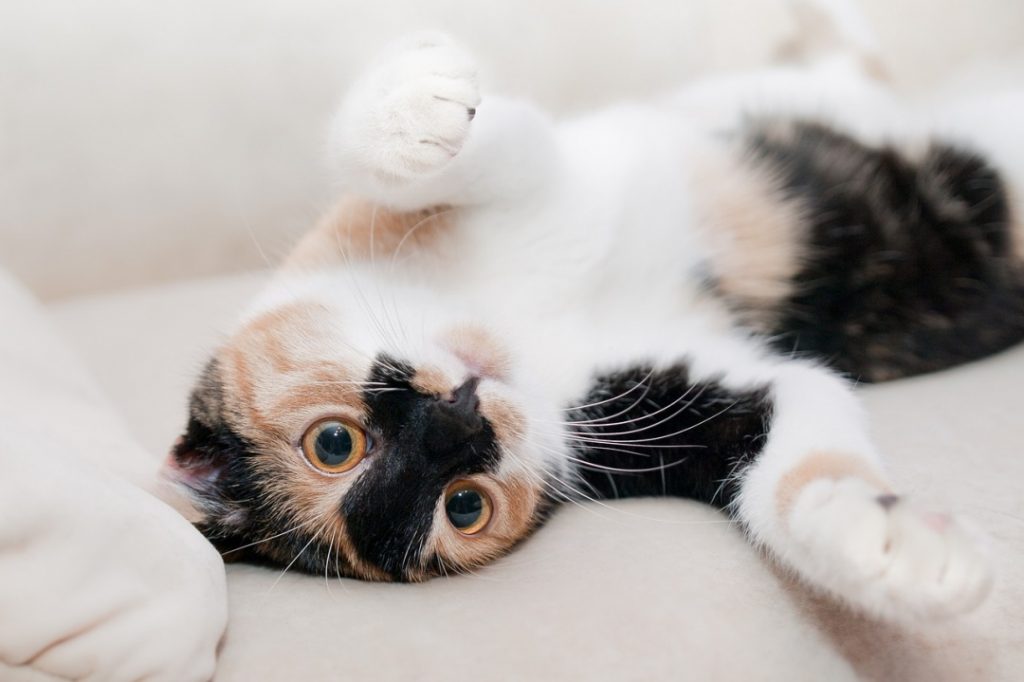Cats have a tendency to scratch up furniture and carpets. For some pet owners, this is a good reason to have their cat declawed, but this procedure is actually a very unpleasant one and should be avoided at all costs. Cats have their claws for a good reason. In fact, there are a number of reasons you should leave your pet’s claws alone.
Many cat owners are unaware of exactly how intrusive declawing is. It is a procedure which amputates the final bone of each toe. It is essentially the same as chopping your fingers off at the first knuckle to prevent your nails from growing.
1. Cats may have to live with ongoing pain
The actual surgery is quite painful, but the pain does not always stop once the wounds have healed. In some rare cases, the claws may grow back inside the soft flesh of the toe, causing invisible pain.
Far more common, however, are the foot problems caused by the lack of bone structure. The cat’s feet will touch the ground differently while walking and running and this can cause problems throughout the body as the animal’s alignment is thrown off.
2. You remove a line of defense
Cats are meant to be able to defend themselves and their first line of defense is a swipe of a clawed paw. Without this very useful option, cats are left to prevent larger and more dangerous animals from hurting them with nothing but their teeth.
Even if you plan to keep your feline companion in the house, pets do escape from time to time and your cat will be far more helpless without claws. In addition, cats are less likely to climb a tree without claws, which is often an effective way to escape predators.
3. The cat may become more aggressive
Claws are not the only way a cat can attack a person. Teeth are also a consideration, particularly since cats without claws tend to become more aggressive in behavior.
If you are considering declawing your cat because you have a baby in the house or the cat is simply acting up, be aware that cats also bite. If you declaw, aggressive behavior is likely to escalate.
4. Litter box training may be lost
Once your cat has been declawed, he is more likely to go to the bathroom outside the litter box. Urinating or defecating outside the litter box is a way to mark territory and may be used more often when scratching is no longer an option. It may also be too painful for the cat to dig after surgery. It is less painful to simply go outside the box and avoid the pain.
5. The cat will lose its great sense of balance
Without the ends of its toes, your cat will find it more difficult to balance. Cats usually use their toes to grip narrow surfaces to help them stay upright. Without the full use of its feet, the cat will be unable to grip properly.
6. The cat will lose muscle tone
One of the benefits of scratching is that the activity stretches muscles throughout the body. A good scratch for a cat is like a great workout for a human. The exercise stretches the muscles and helps tone them. Cats use scratching as a method of staying fit, on top of using it to mark territory and keep claws healthy.
7. Your cat may become depressed
It is not uncommon for cats to become visibly depressed after surgery. Unable to do many things they once enjoyed, cats may be listless, sad, and even refuse to eat. The depression, in combination with loss of muscle tone, can result in weight loss and illness. Unfortunately, in some cases, animals will even die due to a lack of nutrition.
8. Walking becomes difficult
After surgery, your cat has to learn how to walk again. While the basics may seem the same, balance is thrown off by the cat’s new gait. Walking and running is not the same as before and can be very painful, particularly in the beginning.
It may take some time for your feline friend to relearn simple movements like running and jumping. If the cat is in pain, it may prefer to avoid movement except where absolutely necessary. You may notice a drop in activity levels due to declawing.
It is rare to see a medical condition that requires the declawing of cats. Unless there is a legitimate health concern which requires the removal of the cat’s claws, it is best to leave nature alone and let the cat keep its claws.
You can teach most cats to use the scratching post instead of your furniture, which will prevent many future problems. Taking the time to train your cat will pay off. You can also trim the cat’s nails regularly instead of declawing, to reduce the amount of damage done. Declawing is not reversible.

